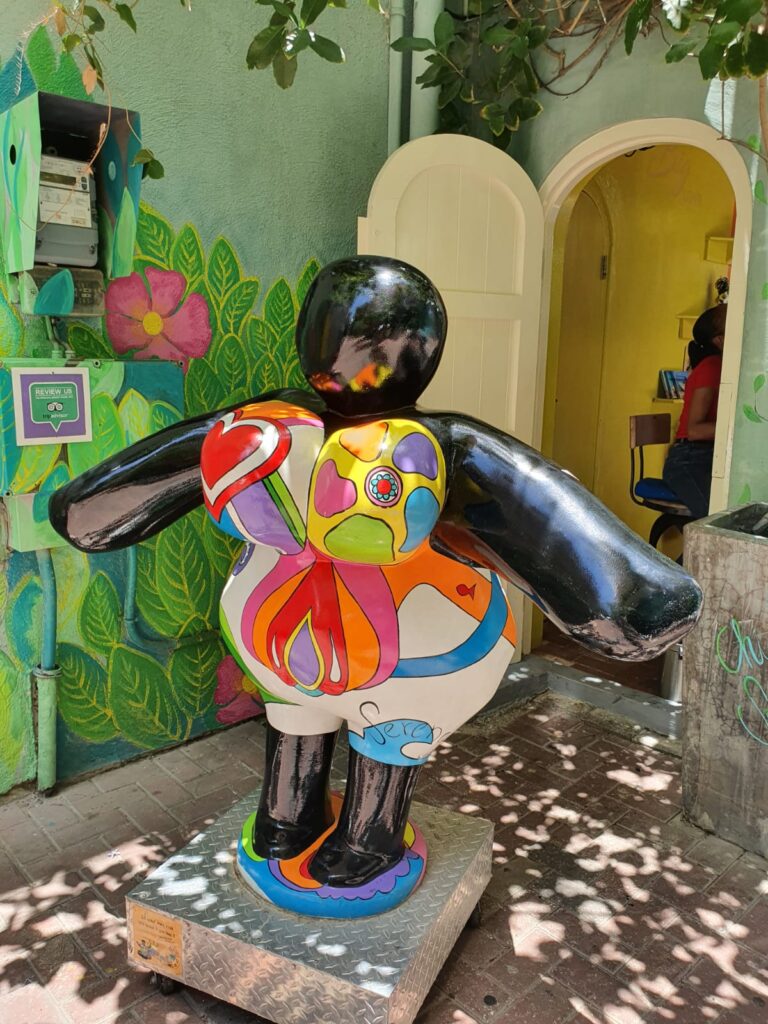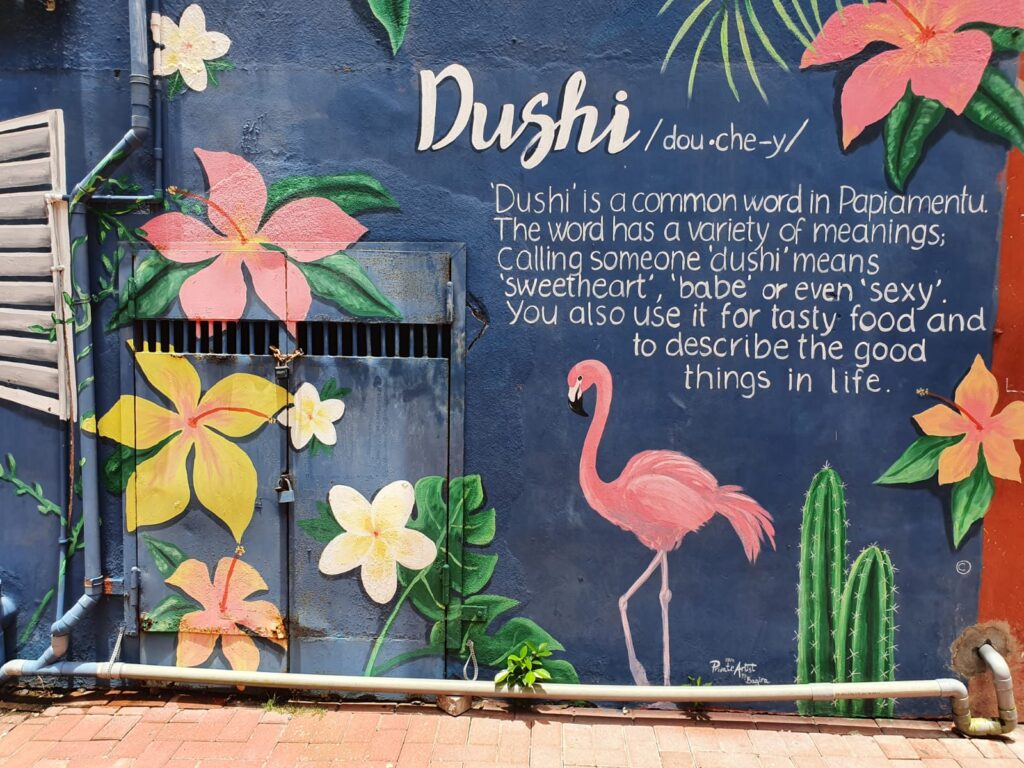Curacao’s Chichis and Me

I visited Curaçao on vacation a few years ago, and I really hope to make a return trip because I had such a wonderful time there. I certainly did not do a fraction of the things I wanted to do but still had an incredible experience that left me wanting more.
The thing about travelling while West Indian is that I am always looking for the ways in which we are similar and where we differ. I thoroughly enjoyed the art and colour of Punda in Willemstad. Lots of places are encouraging local artists to paint the walls of buildings turning them into huge art canvases. But it always makes for a unique experience especially when they are painted by local creatives. I have so many photos from Curaçao in my phone. But one installation that really stuck with me was the Chichis.
Chichis are these voluptuous statues, with big breasts, bellies and bums that are generally posted seated dressed in colourful outfits. Most are bald, but some have rollers in her hair. I fell in love with them instantly. Especially when I discovered the one with curlers. I need to get minis. A valid enough reason for my return.
I can’t express how connected I felt to the Chichis. I was also conflicted by this connection, because they seem to be stereotypical representation of black womanhood in the Caribbean. Despite those concerns I remain drawn to the boldness of the design and the messaging.
You see Chichi means Big Sister, it is a Papiamentu word. Papiamentu is the creole spoken in Curaçao. It is described as having a Portuguese base with West African, Spanish and Dutch words and grammar. Fortunately, a lot of people spoke English, or Spanish so getting around is easy.
As a big sister I feel the burden of being the automatic second mother in my family. The burying of your own wants and desires for the needs of your younger siblings or the men in your life. So, despite my reservations I fell hard for the Chichi dolls.
Throughout Curaçao you will see many Chichis, including larger than life ones all over. The typical pose is seated, but Chichi have been posted standing up, seated in chairs or lying in the sand.
The ubiquitous design was created by Serena Janet Israel, a German who settled in Curaçao in 2001. But other artists have created their versions of Mama or Big Sister dolls, some on curlers who are reminiscent of the women sitting in the nerghbourhoods watching their children play.
Serena created her Chichi doll to represent as a glue that holds the family together but is a light that cannot be dimmed.
To learn more about Serena’s Chichi dolls, you can visit her website. I am still deciding if I want to do a workshop or if I could tour her art factory, buy my two dolls and call that George. I can decide around the time I book my return.
